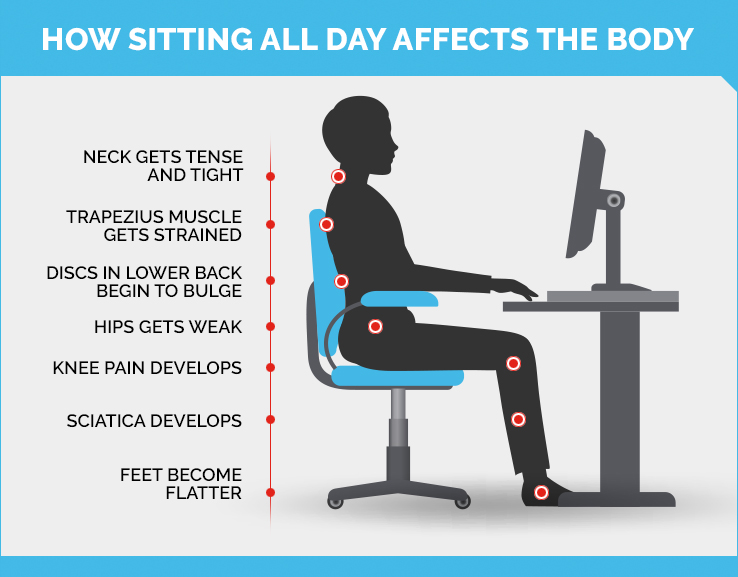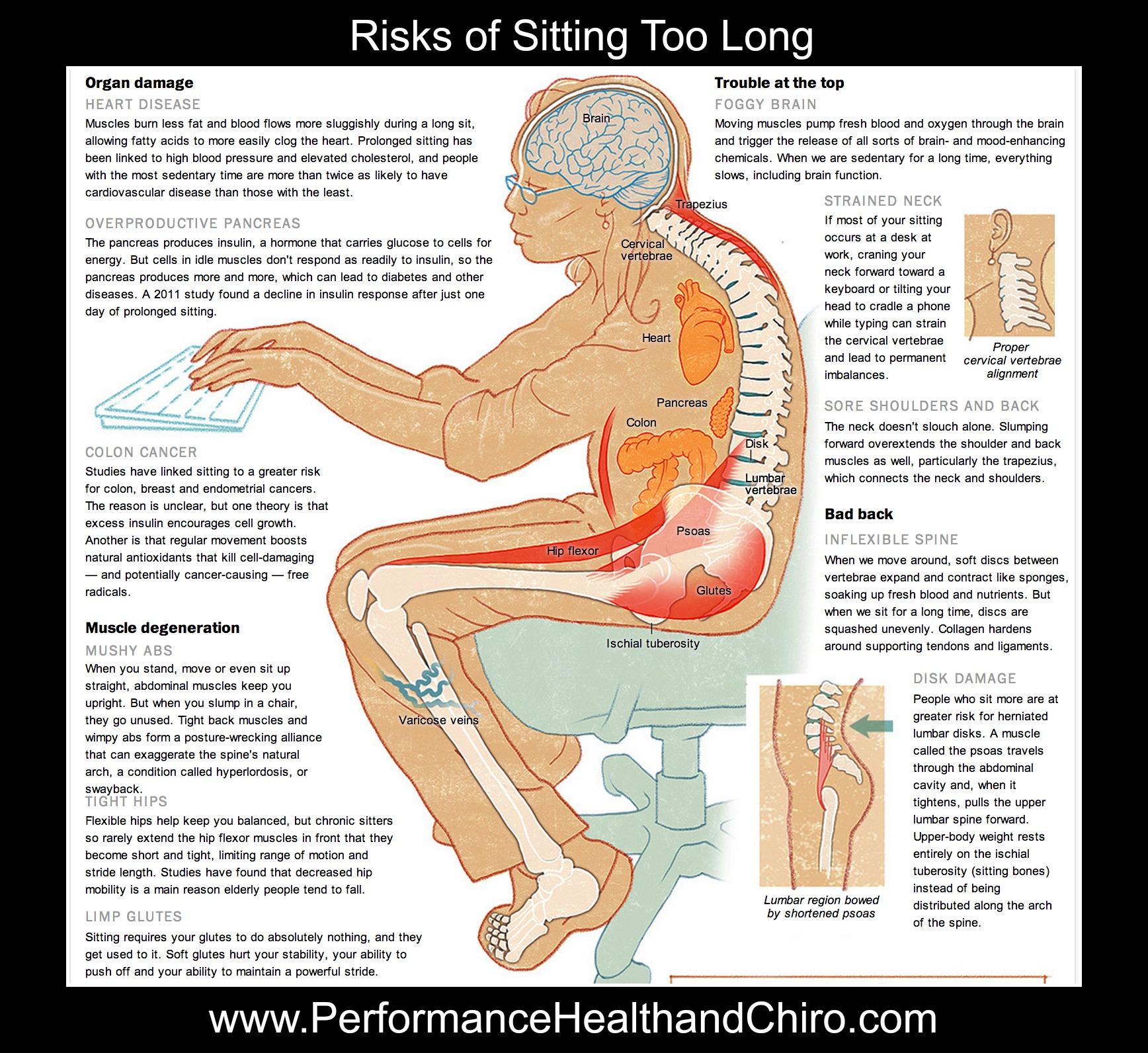We deliver to you every day from 7:00 to 23:00
The best discounts this week
Every week you can find the best discounts here.
How Do I Reduce Pain From Sitting Too Long?
In today’s world, sitting for prolonged periods has become a common part of life. Whether you’re working at a desk, watching TV, or traveling, sitting for long hours can lead to significant discomfort and even pain. Fortunately, there are effective ways to manage and reduce pain from sitting too long, allowing you to improve your posture and overall well-being. This article explores the causes of sitting-induced pain and provides practical solutions.
Why Does Sitting Too Long Cause Pain?
Sitting for long periods places strain on various parts of the body, leading to discomfort and pain. When we sit for extended periods, the muscles and joints in the lower back, neck, hips, and legs become stiff. This can lead to poor posture, muscle fatigue, and restricted circulation. Over time, this can contribute to chronic pain.
Key Factors Contributing to Sitting Pain
-
Reduced blood flow: Sitting restricts blood flow to certain areas, which can cause muscle stiffness and discomfort.
-
Posture issues: Poor posture, such as slouching or leaning forward, can strain the spine and muscles, leading to pain.
-
Pressure on spinal discs: Prolonged sitting can place excessive pressure on the discs in your spine, resulting in discomfort and even long-term back problems.

Common Areas of Pain from Sitting Too Long
1. Lower Back Pain
Lower back pain is one of the most common issues for people who sit for long periods. Sitting, especially with poor posture, places pressure on the spinal discs and muscles in the lower back. This can lead to stiffness, tension, and even herniated discs over time.
2. Neck and Shoulder Pain
When sitting for long periods, many people tend to lean forward, causing strain on the neck and shoulders. This improper posture can result in muscle tension, which may lead to discomfort and stiffness in these areas.
3. Hip and Leg Pain
Sitting for hours can cause tightness in the hip flexors and hamstrings, which may result in leg cramps and discomfort. The lack of movement also reduces blood circulation, contributing to feelings of heaviness or tingling sensations in the legs.
4. Hand and Wrist Pain
For those who use a computer or write for long hours, hand and wrist pain are common. Poor ergonomics, such as incorrect keyboard height or wrist position, can strain the muscles and tendons in these areas, causing pain and inflammation.
How to Reduce Pain from Sitting Too Long
There are several effective methods to reduce and prevent pain caused by prolonged sitting. These include simple stretches, posture corrections, and ergonomic improvements. Let’s look at some practical tips:
1. Take Frequent Breaks
One of the easiest ways to prevent pain from sitting too long is to take frequent breaks. Ideally, stand up and move around at least every 30 minutes. This helps relieve pressure on the spine, stimulates blood circulation, and gives your muscles a chance to relax.
-
Set a timer: Use your phone or computer to remind you to take breaks.
-
Walk around: Even a quick 2-minute walk can be beneficial.
2. Stretching and Mobility Exercises
Incorporating stretching and mobility exercises into your routine can help alleviate tension and improve flexibility. A few simple stretches can significantly reduce pain from sitting too long.
Some helpful stretches include:
-
Neck stretches: Gently tilt your head side to side to relieve neck tension.
-
Seated hamstring stretch: While sitting, extend one leg out straight and reach for your toes to stretch your hamstrings.
-
Hip flexor stretch: Stand up, take a step back with one leg, and bend your front knee to stretch the hip flexor.

3. Improve Your Posture
Good posture is crucial for preventing pain from sitting. When seated, ensure that your spine is aligned, your feet are flat on the floor, and your knees are at a 90-degree angle. Keep your shoulders relaxed and avoid slouching.
Ergonomic tips for proper sitting:
-
Chair height: Ensure your chair is at the right height so that your feet rest comfortably on the floor.
-
Back support: Use a chair with good lumbar support to reduce strain on your lower back.
-
Screen height: Keep your computer screen at eye level to prevent neck strain.
4. Use a Standing Desk
If possible, consider using a standing desk or an adjustable desk that allows you to alternate between sitting and standing. Standing for part of the day reduces the pressure on your spine and improves circulation.
5. Stay Hydrated
Hydration plays a key role in muscle function and overall health. Dehydration can cause muscle cramps and discomfort, especially after prolonged periods of sitting. Drink plenty of water throughout the day to help prevent these issues.
Benefits of Regular Movement
Regular movement is essential for your overall health. Here’s how staying active can benefit you:
-
Reduced muscle stiffness: Frequent movement prevents muscles from becoming tight and stiff.
-
Improved circulation: Moving around helps pump blood to your muscles, preventing cramps and numbness.
-
Better posture: Frequent activity encourages good posture and can help prevent slumping.
Simple Exercises You Can Do While Sitting
-
Seated leg lifts: Sit up straight and slowly lift one leg at a time, holding for 5-10 seconds.
-
Shoulder rolls: Roll your shoulders forward and backward to reduce tension.
-
Ankle circles: Lift one foot off the floor and make circles with your ankle to improve circulation.

When to Seek Medical Help
While most of the pain from sitting too long can be managed with the tips above, there are times when medical intervention may be necessary. If you experience severe or persistent pain, numbness, or tingling, it could indicate an underlying condition such as herniated discs or nerve damage. It’s important to consult with a healthcare professional if you experience:
-
Chronic pain that doesn’t improve with stretches or movement.
-
Numbness or tingling sensations in the legs, back, or arms.
-
Sharp pain that worsens when sitting or standing.
FAQs About Reducing Pain from Sitting Too Long
1. How often should I take breaks from sitting?
You should aim to stand or move around every 30 minutes. Short breaks help relieve pressure and improve circulation, reducing the risk of pain.
2. What stretches are best for relieving back pain from sitting?
Some effective stretches include hamstring stretches, hip flexor stretches, and lower back stretches. These help alleviate tension in the muscles affected by prolonged sitting.
3. Can a standing desk help with sitting pain?
Yes, a standing desk can help reduce pain caused by sitting too long. It encourages more movement and reduces pressure on your spine and muscles.
4. How can I improve my posture while sitting?
Sit with your feet flat on the floor, knees at a 90-degree angle, and your back straight. Ensure that your screen is at eye level to avoid neck strain.
5. Is sitting too long bad for my health?
Yes, prolonged sitting has been linked to several health issues, including heart disease, obesity, and musculoskeletal pain. It’s important to incorporate movement throughout the day.
Conclusion
Sitting for long periods can lead to discomfort, pain, and even long-term health issues if not addressed properly. By incorporating frequent breaks, stretching routines, and posture improvements, you can significantly reduce the pain caused by sitting too long. Remember to stay hydrated, move regularly, and consider using ergonomic tools like a standing desk to promote better posture and circulation.
With these tips and strategies, you can minimize the discomfort associated with prolonged sitting and improve your overall health and well-being. If pain persists, always consult with a healthcare provider to ensure there are no underlying issues that need professional attention.











